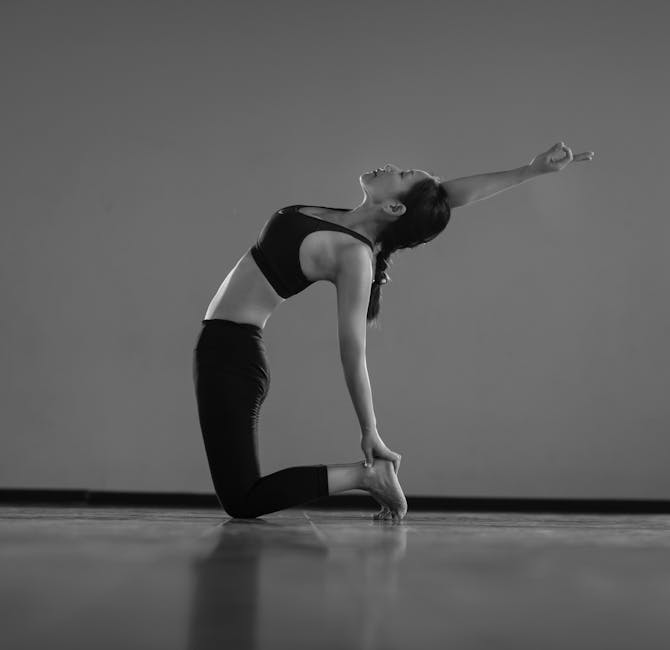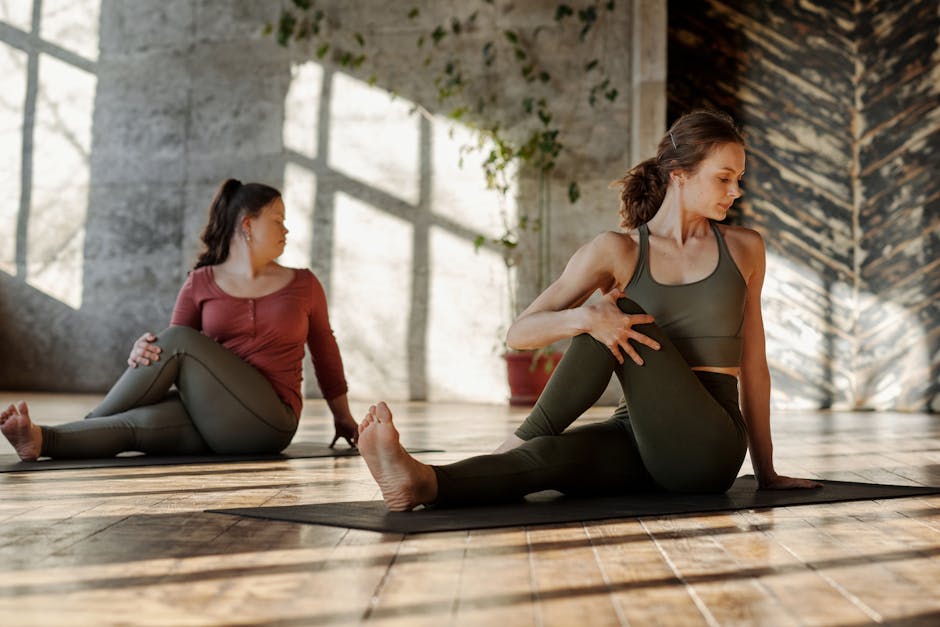The Importance of Stretching Before Workouts
Did you know that stretching before a workout can boost your performance and help prevent injuries? it’s true! Many people skip this crucial step, thinking it doesnt matter. But stretching is key to getting the most out of your workouts. In this article, well explore why stretching is important, how to do it properly, and some tips to make it a part of your routine.
Why Stretching Matters

Stretching warms up your muscles and prepares your body for exercise. When you stretch, you increase blood flow to your muscles. This makes them more flexible and ready to work. Think of it as getting your car warmed up before a long drive. If you skip it, you might face problems down the road.
Here are some key benefits of stretching:
- Improves Flexibility: Regular stretching can help you become more flexible, making everyday movements easier.
- Reduces Risk of Injury: Warming up your muscles helps prevent strains and sprains.
- Enhances Performance: Stretching prepares your muscles for the demands of your workout, allowing you to perform better.
- Increases Blood Flow: More blood to your muscles means more oxygen, which fuels your workout.
What Happens When You Skip Stretching?

Skipping stretching can lead to tight muscles. Tight muscles are more prone to injuries. You might feel stiff during your workout and not be able to perform at your best. Think about an elastic band. When it’s cold and stiff, it doesnt stretch well. But when it’s warm, it can stretch easily. Your muscles work the same way.
Also, without stretching, you might experience soreness after your workout. This can make it hard to stay consistent with your fitness routine. Instead of looking forward to your next workout, you might dread it because of discomfort.
How to Stretch Properly Before Workouts

Now that we understand the importance of stretching, lets look at how to do it correctly. There are two main types of stretching: dynamic and static.
What is Dynamic Stretching?
Dynamic stretching involves movement. It prepares your body for exercise by actively engaging your muscles. Instead of holding a stretch, you move through a range of motion. This type of stretching is ideal before a workout. Here are some examples:
- Leg Swings: Stand next to a wall and swing one leg forward and back, then switch legs.
- Arm Circles: Rotate your arms in circles to loosen your shoulders.
- Walking Lunges: Step forward into a lunge and switch legs as you walk.
What is Static Stretching?
Static stretching involves holding a position for a period of time, usually between 15-30 seconds. This type of stretching is best done after your workout when your muscles are warm. Here are some examples:
- Hamstring Stretch: Sit on the floor and reach for your toes.
- Quadriceps Stretch: Stand and pull one foot toward your buttocks, holding your ankle.
- Shoulder Stretch: Pull one arm across your body and hold it with the other arm.
How Long Should You Stretch?

A good rule of thumb is to spend about 5-10 minutes on stretching before your workout. Focus on the major muscle groups youll be using. If you’re planning a leg day, emphasize your hamstrings, quadriceps, and calves. If you’re hitting upper body, focus on your shoulders, arms, and back.
Common Misconceptions About Stretching
Many people have myths about stretching that can lead to misunderstandings. Lets clear some of these up:
Does Stretching Make You Taller?
No, stretching does not make you taller. While it can improve your posture and flexibility, it won’t change your height. However, good posture can make you look taller!
Is Stretching Only for Athletes?
Absolutely not! Stretching is for everyone. Whether you’re a weekend warrior or someone who sits at a desk all day, stretching can benefit you. It helps keep your muscles flexible and can alleviate tension from sitting.
Engaging in a Stretching Routine
To make stretching a consistent part of your workout, try these tips:
- Set a Schedule: Make stretching part of your workout routinedo it at the same time every session.
- Stay Consistent: Aim to stretch your muscles at least three times a week.
- Listen to Your Body: If something doesnt feel right, don’t push it. Stretch to a point of mild discomfort, not pain.
What Experts Say About Stretching
Experts agree on the value of stretching. According to Dr. Jennifer Campbell, a sports medicine specialist, Stretching is a crucial component of any fitness routine. It prepares the body for movement and can greatly reduce injury risk.
This highlights the importance of taking a few minutes to stretch before diving into intense workouts. it’s a small investment of time for big returns!
Stretching for Different Activities
Different workouts require different types of stretching. Heres a quick guide:
Cardio Workouts
If you’re going for a run, include stretches that engage your legs and hips. Focus on dynamic stretches like leg swings and high knees. These movements get your heart rate up while loosening those muscles.
Weight Lifting
For weight lifting, focus on both dynamic and static stretching. Warm up with dynamic movements and then do static stretches to help you recover afterward. Target the muscles youll be using, like your arms, shoulders, and back.
Yoga and Flexibility Training
In yoga, flexibility is key. Here, static stretching plays a significant role. Each pose helps deepen your stretch and promote relaxation. don’t rush through themtake your time to feel the benefits.
Actionable Takeaways
Now that you know the importance of stretching, here are some actionable takeaways:
- don’t skip stretching before workoutsmake it a habit!
- Incorporate dynamic stretches into your warm-up routine.
- Save static stretches for post-workout recovery.
- Listen to your body and stretch safely.
By making stretching part of your routine, you can enhance performance and reduce injury risk. Remember, a few minutes of stretching can go a long way!
Want to learn more about injury prevention? Check out our post on Injury Prevention Tips.
Are you ready to stretch? Your body will thank you!



